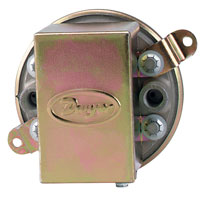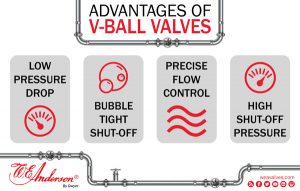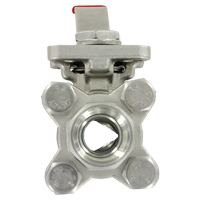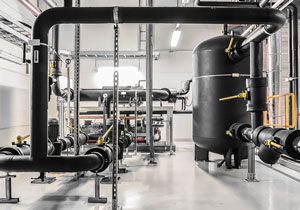
Question: Does Dwyer offer a compact, low cost differential pressure switch for high duct static cutout applications? Continue reading “Ask the Expert: High Duct Static Cutout; Low Pressure, Low Cost”

Manufacturing Excellence Since 1931

Question: Does Dwyer offer a compact, low cost differential pressure switch for high duct static cutout applications? Continue reading “Ask the Expert: High Duct Static Cutout; Low Pressure, Low Cost”

Introduction
 Ball valves are designed to be used in a variety of applications and markets, but a V-port ball valve offers the added ability to be used as a control valve where necessary. The main differentiator is a contoured V-port in the ball, most commonly available with a 15°, 30°, 45°, 60°, or 90° angle, which produces an equal percentage flow characteristic for better control. V-ball valves are known to offer a variety of advantages in flow control applications, especially when compared to larger and more expensive control valves. Continue reading “Advantages of V-Ball Valves”
Ball valves are designed to be used in a variety of applications and markets, but a V-port ball valve offers the added ability to be used as a control valve where necessary. The main differentiator is a contoured V-port in the ball, most commonly available with a 15°, 30°, 45°, 60°, or 90° angle, which produces an equal percentage flow characteristic for better control. V-ball valves are known to offer a variety of advantages in flow control applications, especially when compared to larger and more expensive control valves. Continue reading “Advantages of V-Ball Valves”
 Insertion flowmeters provide a great alternative to inline flowmeters because they are typically less expensive and easier to install than inline meters. But how do you know which type of insertion meter to choose?
Insertion flowmeters provide a great alternative to inline flowmeters because they are typically less expensive and easier to install than inline meters. But how do you know which type of insertion meter to choose?
There are two primary types of insertion flowmeters: mechanical and non-mechanical. It’s vital to understand the application and benefits of each type of meter, to ensure the best instrumentation solution for your application. Continue reading “Mechanical vs. Non-Mechanical Flowmeters”
 Picture this:
Picture this:
It is the first day on the job for a new contractor. Their project is to balance the HVAC system of a commercial office space. The contractor measures the total pressure and static pressure in the office duct work, using an air velocity manometer, and then calculates the velocity. The velocity measurement seems high, so the contractor is led to believe that either the measuring instrument isn’t precise enough, or the calculations are off. Therefore, the contractor turns to a duct traverse to check the velocity measurement. Continue reading “Duct Traverse Process with Modern Technology”